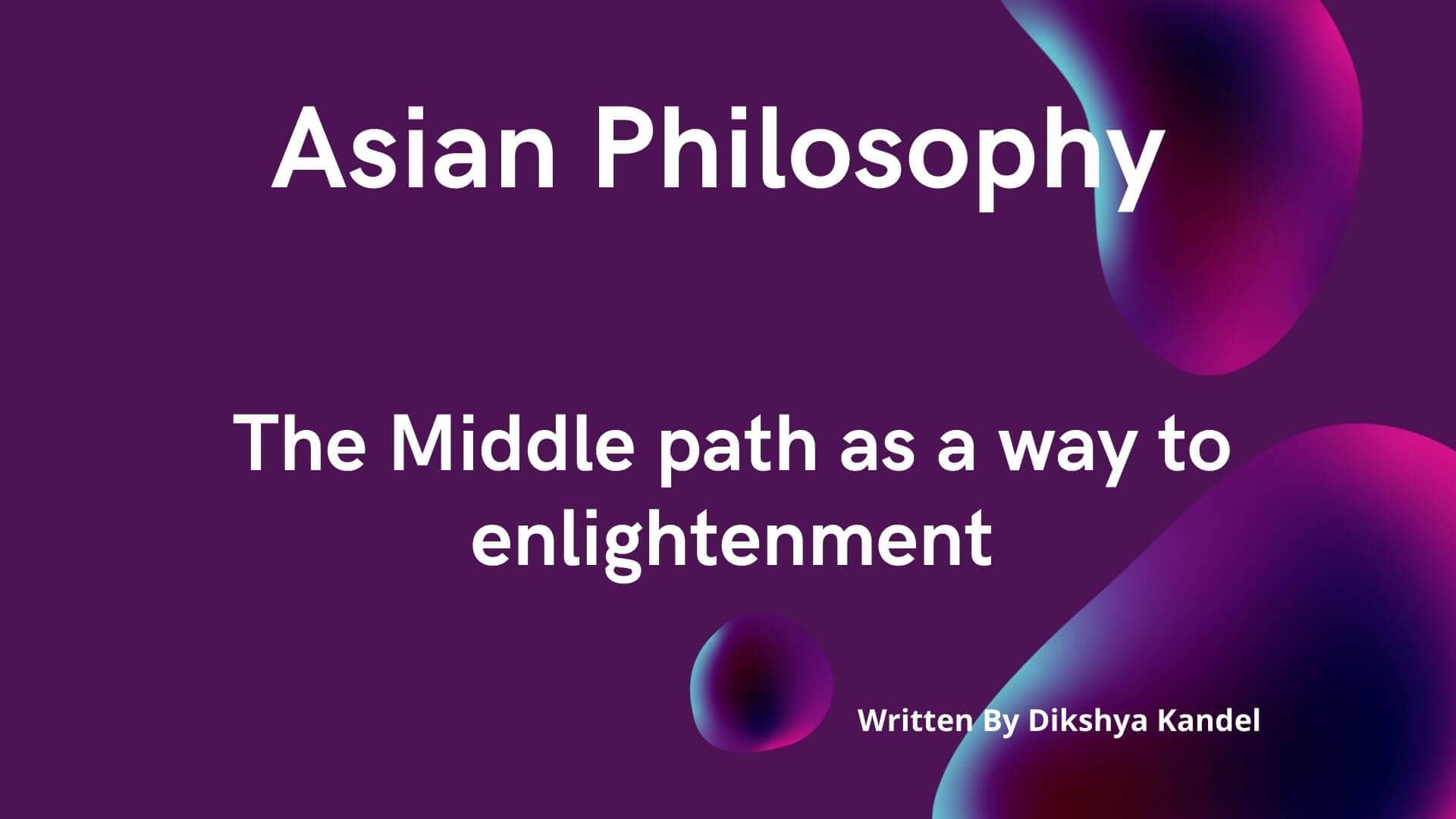This essay about Asian Philosophy ,The Middle path as a way to enlightenment written by
Dikshya Kandel
Asian Philosophy –The Middle Path as A Way to Enlightenment
Buddhism, which is one of the largest religions of the world, has profoundly influenced the
character and evolution of civilization not only limited to the Indian subcontinent but also in
many other parts of Asia. Based on the teaching of the historical figure named Siddharta
Gautama, later known as Buddha who lived around 6th to 4th-century B.C, Buddhism has
developed various beliefs, ideas and paths of practices for spiritual development, among
which the concept of “the middle way” serves to be the pillar for liberating individual from
the cycles of life. This notion of the “Middle way” as the path to wisdom and freedom from
suffering is unique to Buddhism as it contrasts with other predominant religious ideologies of
that period in India, such as Hinduism and Jainism. In addition to that, the term ‘Middle Way‘
is also an alternate name for Buddhism because it is the universal pursuit of all Buddhist
traditions. Subsequently, by acknowledging the importance of approaching a middle way
between extreme austerity and extreme indulgence in Buddhism, I chose this subject for my
final essay in which I intend to analyze how this unique concept of Buddhism developed and
why it is the considered as the path to enlightenment.
“The middle way discovered by a Perfect One avoids both these extremes; it gives vision, it
gives knowledge, and it leads to peace, to direct acquaintance, to discovery, to Nibbana. And
what is that middle way? It is simply the noble eightfold path, that is to say, right view, right
intention; right speech, right action, right livelihood; right effort, right mindfulness, right
concentration. That is the middle way discovered by a Perfect One, which gives vision, which
gives knowledge, and which leads to peace, to direct acquaintance, to discovery, to Nibbana”
(Dhammacakkappavattana Sutta 3:1-4)
The Middle Path or Middle way, also known as Madhyama pada in Sanskrit and
Majjhima pada in Pali, is the suggested way of life by buddha that embodies his teachings.
Buddha defined “The middle path” in his first sermon delivered a few days after his
enlightenment to the five ascetics. However, being an ascetic, Siddhartha himself was
engaged in austerities as practiced by the yogis of his time. After several years of ascetic
practices, he concluded that the extreme path of asceticism was not the right paths to
enlightenment and neither was the extreme indulgence. It is then, in his denial of both
extremes, that Buddha becomes enlightened and encounters the ultimate truth of life. Based
on his experience, Buddha realized the need for rejecting extremes of sensual indulgence and
self-mortification and then introduced the middle way of moderation for resolving the serious
spiritual problem of that time. To understand why this issue demanded attention, we need to
know about other religious ideologies prevailing in India and Nepal during the time of
Buddha. Before Buddhism, there were two dominant religious groups in ancient times
namely Hinduism and Jainism. In one sect of Hinduism put more emphasis was on the
enjoyment of life. The practice of conducting various rites and rituals to propitiate gods to
obtain blessings for prosperity in life was a popular side of Vedic religion during the time of
Buddha (Eliot, G,2018). Being from of Hindu Royal family, Buddha himself was very
familiar with this tradition which focused on ways to fulfil desires rather than rejecting it
before his renunciation. Although the Vedic religion had an ascetic side as well, it was
unconventional and barely practiced by few sagas and yogis on isolated areas (Eliot, 2018).
On the other hand, Jain Dharma held an opposite religious spectrum as this religion stress on
renunciation, detachment of all forms of desires and self-mortification, unlike Hinduism
(Carrithers, 1990). Accordingly, the two predominant religious ideologies in ancient India
were poles apart from each other, whereas, the middle way of Buddha is in between the two
hedonistic and ascetic traditions. According to Dhammacakkappavattana Sutta, “the middle
path” includes eight virtuous practices, known as Nobel Eightfold Path: right view, right
intentions, right speech, right action, right livelihood, right effort, right concentration and
right mindfulness which is further classified into the wisdom path, the ethical conduct path
and the mental disciple path (Bodhi, 1994). Just like a road map, these eightfold paths show
ways to cease suffering, live a life full of compassion and gain spiritual awakening. In some
way or the other, the whole teaching of buddha deals with this eightfold path as it is the ideal
means to achieve enlightenment or Nirvana that the buddha himself discovered during his
spiritual journey.
In my perspective, the Buddhist philosophy and its approach towards life are more
realistic and gives more grounds to follow. In addition to that, classic Buddhism does not
incudes any kinds of supernatural beings instead explain the ways to live a life of compassion
and kindness in this reality though teachings like “the middle path”. Likewise, I think the
“Middle Path” is a distinct theory and way of Buddhist practice that is unique not just to
Hinduism and Jainism; but to other religions as well. Moreover, “The middle path” is a
perfect tool to discipline our mind and a remedy for our everyday mix-ups with attachment
and suffering. Since it places great emphasis on human thoughts and actions in coping with
the natural environment, society or individual issues, I believe that “the Middle Path” of
Buddhism not only helps to pursue spiritual growth but also promotes personal development
needed in everyday life.
Word count: 900
Read More
References:
Carrithers, M. (1990). Jainism and Buddhism as enduring historical streams. Journal of the
Anthropological Society of Oxford, 21(2), 141-163.
Eliot, G. (2018). Hinduism and Buddhism (Vol. 1). BoD–Books on Demand.
Bodhi, B. (1994). [online book] Buddhanet.net. Available at:
http://www.buddhanet.net/pdf_file/noble8path6.pdf [Accessed 21 Jul. 2019
